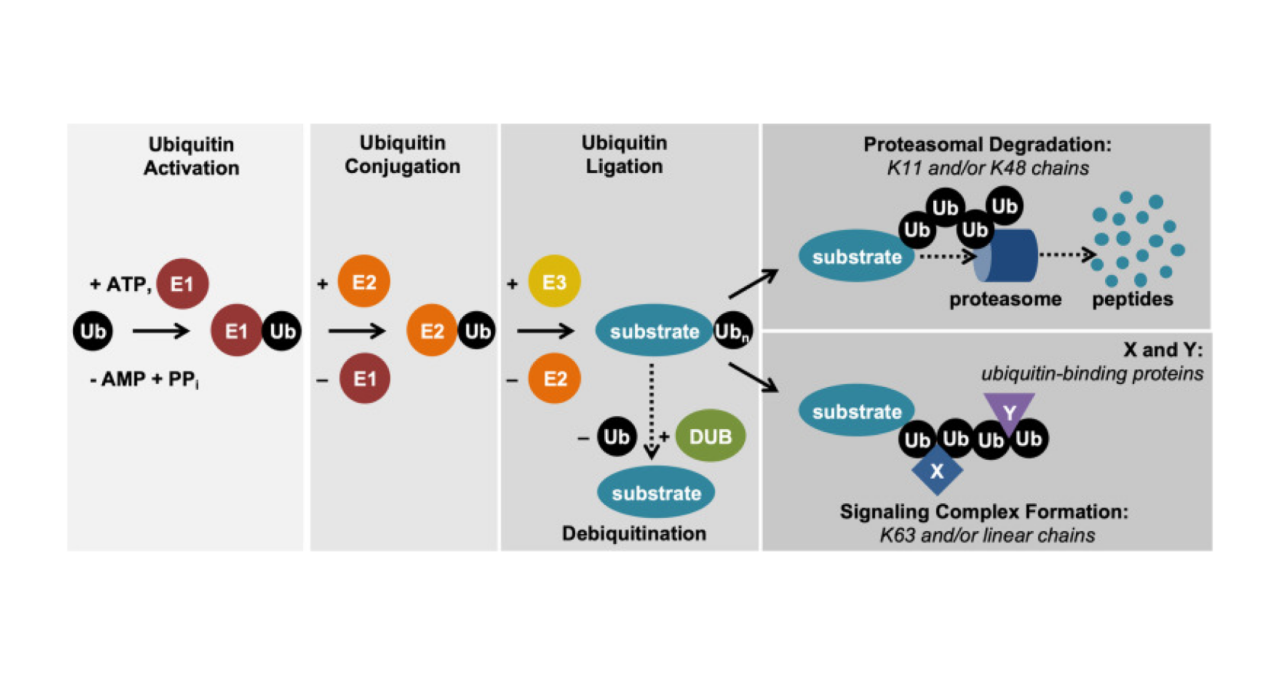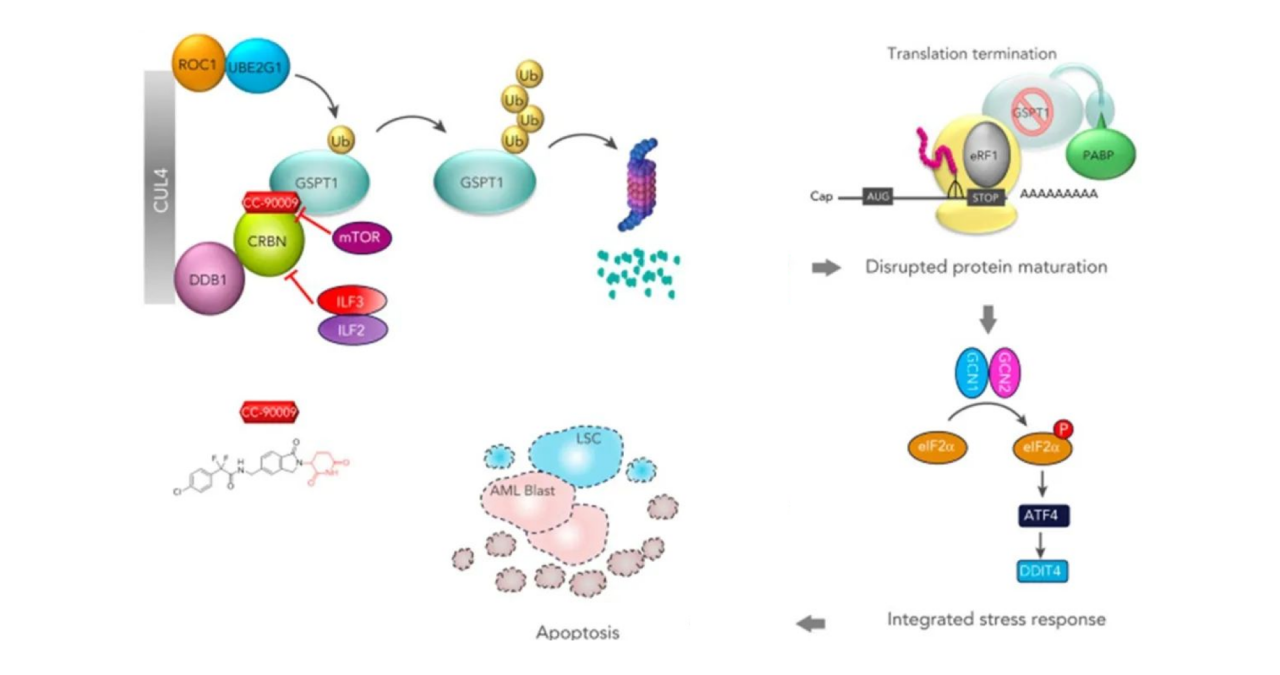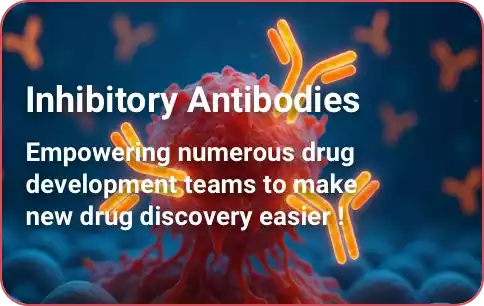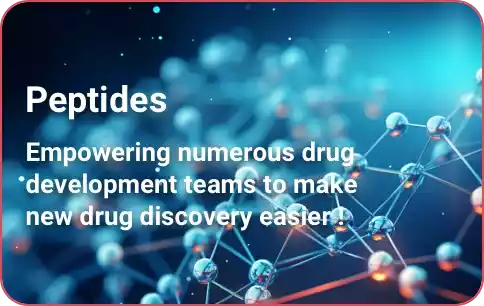 Your shopping cart is currently empty
Your shopping cart is currently empty
Article | 08 Mar 2024
WIKIMOLE—Eragidomide & Mezigdomide
By TargetMol

Eragidomide, Catalog number T10765, also known as CC-90009 or Cereblon modulator 1, is a selective cereblon (CRBN) E3 ubiquitin ligase modulator with specificity towards GSPT1. It acts through molecular glue, selectively targeting GSPT1 for ubiquitination and proteasomal degradation via the CRL4CRBN pathway.

Mezigdomide, Catalog number T10703, alias CC-92480, is a novel and selective CRBN E3 ubiquitin ligase modulator. It functions in the form of a molecular glue to recruit IKZF1 and ZFP91 targets to the CRL4CRBN E3 ubiquitin ligase, leading to their ubiquitination and degradation.
E3 Ubiquitin Ligase
E3 ubiquitin ligases play a crucial role in protein degradation. Ubiquitin (Ub) is a small protein consisting of approximately 76 amino acids with a molecular weight of around 8.5 kDa, and it is widely present in all eukaryotic cells.
The process in which ubiquitin is covalently attached to target proteins, under the catalytic action of a series of enzymes, is known as ubiquitination. This is a highly regulated post-translational modification of proteins that not only participates in protein degradation but also plays a vital role in regulating cellular functions. Ubiquitination typically involves the coordinated action of three enzymes: E1 ubiquitin-activating enzyme, E2 ubiquitin-conjugating enzyme, and E3 ubiquitin ligase. The process is as follows:
1. Ubiquitin-activating enzyme (E1) activates the ubiquitin molecule using ATP as an energy source.
2. E1 transfers the activated ubiquitin molecule to the ubiquitin-conjugating enzyme (E2).
3. Ubiquitin ligase (E3) facilitates the transfer of ubiquitin from the E2 enzyme to a specific lysine residue on the target protein.
In summary, the coordinated action of ubiquitin ligases allows ubiquitin molecules to be covalently attached to target proteins, thereby regulating the function, stability, and localization of proteins. E3 ubiquitin ligases, as a critical final step, hold significant importance in the field of protein degradation and provide powerful tools for the development of novel drugs.

Application
The human body encodes over 600 different E3 ubiquitin ligases, but currently, only about 10 publicly disclosed E3 ligases are used in protein degradation research. Among them, two E3 ligases, CRBN and VHL12, have entered the clinical stage for protein degradation studies.
Eragidomide (CC-90009) and Mezigdomide (CC-92480) are both CRBN E3 ligase modulators (CELMoD), exhibiting potent anti-tumor and immunomodulatory effects. They particularly induce immune-stimulatory effects and enhanced anti-tumor activity against multiple myeloma cells. Currently, they are undergoing clinical trials as potential treatments for diseases such as multiple myeloma.
CELMoD stands for Cereblon E3 Ligase Modulator, and it is a small molecule that can bind to E3 ligases (such as CRBN). Subsequently, it recruits new substrate proteins for ubiquitination and proteasomal degradation.
GSPT1, also known as G1 to S phase transition 1, is a crucial translation termination factor significantly overexpressed in various cancer tissues and cells.
Molecular glue refers to a small molecule that can bind to E3 ligases (e.g., CRBN) and then recruit new substrate proteins for ubiquitination and proteasomal degradation.

Reference
[1] Cockram PE, Kist M, Prakash S, Chen SH, Wertz IE, Vucic D. Ubiquitination in the regulation of inflammatory cell death and cancer. Cell Death Differ. 2021;28(2):591-605. doi:10.1038/s41418-020-00708-5.
[2] Surka C, Jin L, Mbong N, et al. CC-90009, a novel cereblon E3 ligase modulator, targets acute myeloid leukemia blasts and leukemia stem cells. Blood. 2021;137(5):661-677. doi:10.1182/blood.2020008676
[3] Fuchs O. Targeting cereblon in hematologic malignancies. Blood Rev. 2023;57:100994. doi:10.1016/j.blre.2022.100994
[4] Wu W, Nelson GM, Koch R, et al. Overcoming IMiD resistance in T-cell lymphomas through potent degradation of ZFP91 and IKZF1. Blood. 2022;139(13):2024-2037. doi:10.1182/blood.2021014701
Other Articles


Subscription to TargetMol News
An essential round-up of science news, opinion and analysis, delivered to your inbox every weekday.

Copyright © 2015-2025 TargetMol Chemicals Inc. All Rights Reserved.























